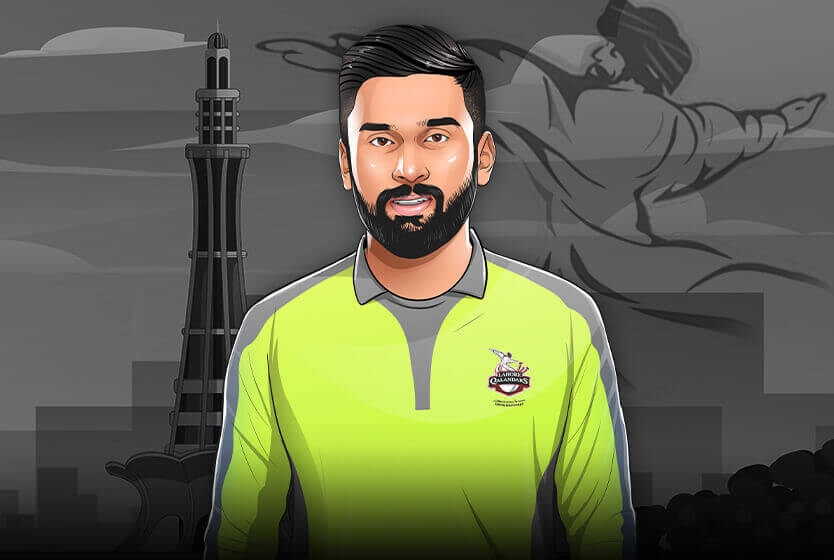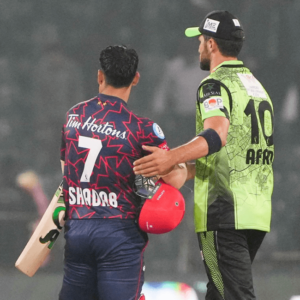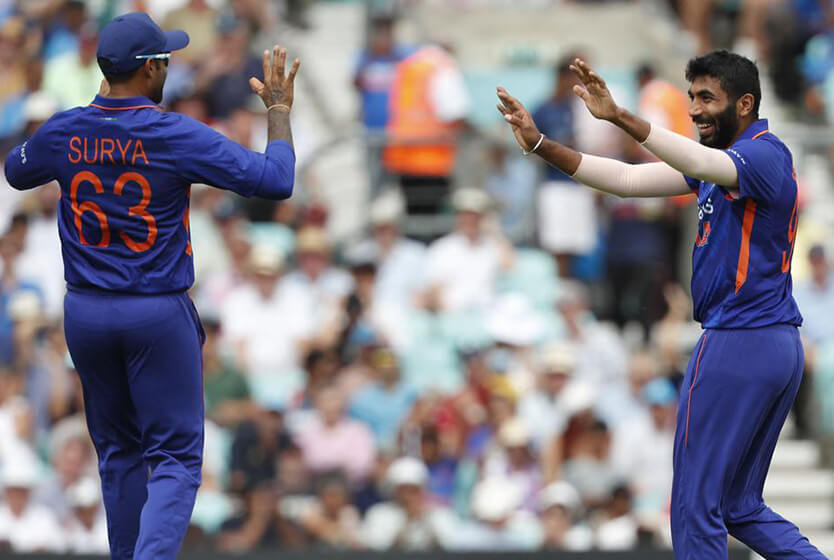
What Can We Expect From Abdullah Shafique in His Debut PSL Season?
The youngster has been signed up by Lahore Qalandars and is expected to be an important component of their top order.
Abdullah Shafique first burst into the national consciousness with a fine century in his debut T20. Whispers of his talent had only grown louder since his century on FC debut. Combine that with an excellent National T20, and he found himself in the Pakistan squad for a low-key series vs. Zimbabwe.
However, it soon became clear that his batting style may not be one that suited the Pakistan T20 side, with Babar and Rizwan already serving as the anchors. Thus through no real fault of his own, Abdullah found himself ousted from the T20 side. He did receive a Test and ODI squad call-up, formats more suited to his game.
Lahore Qalandars had struggled with the performances of their Top 3 in PSL 6. They needed a stable head to partner Fakhar’s fire and Salt’s bashing. They needed someone like Babar or Rizwan, but of course, Karachi and Multan would sooner liquidate than give up those two, so Lahore went outside the box.
Abdullah has a very decent National T20 record, and his performances at Test/FC level show that he has the technique to stay out in the middle. He will be expected to perform the easiest batting job in T20 cricket, anchoring the innings.
So what can we expect of Abdullah in the PSL?
His National T20 numbers (41/133) are very similar to fellow anchor Imam-ul-Haq’s NT20 numbers since 2020 (41/134). However, on closer inspection, it seems they have taken two different roads to arrive at the same destination, with Abdullah’s batting approach more similar to that of Babar or Rizwan than Imam.
Starting Out
In his first 10 balls, Abdullah actually gets off the blocks quicker than Rizwan or Babar and certainly Imam. But his general approach in the Powerplay is closer to that of Rizwan.
Rizwan looks to take advantage of the Powerplay; this is signified by his lower Bp6 (balls per six) and his higher SR vs. spin inside as opposed to outside the Powerplay. Abdullah has a similar Bp6 to Rizwan inside the Powerplay and attacks spin to a greater degree. But despite their higher Powerplay intent, both don’t seem to get dismissed. On the other hand, Babar has a lower PP average, a higher BP6, and strikes faster against pace than spin in the Powerplay. This is perhaps due to his batting style that prefers pace on the ball and finding gaps as opposed to the other two who are happy to loft over the infield.
| Abdullah Shafique | Mohammad Rizwan | Babar Azam | |
| First 10 balls SR | 124 | 108 | 108 |
| PP Average | 70.5 | 60.1 | 44.4 |
| PP SR | 124 | 120 | 120 |
| PP Bp6 | 37.8 | 32.3 | 107.3 |
| PP Pace/Spin SR | Spin SR > Pace SR | Spin SR > Pace SR | Spin SR < Pace SR |
In the Middle
In his Post-PP phase, Abdullah does something that none of Babar, Rizwan, or Imam do; he slows down. None of the three mentioned up the rate in the 7-11 phase, but they just continue batting at the same rate as they did in the Powerplay. Rizwan has the smallest step of the three, so one could say he’s the most like Abdullah in this aspect. And while Abdullah, like Rizwan, scores faster vs. pace than spin in the middle of the innings, that’s where the similarities end, and he switches to Babar.
Babar is the King of the Middle Overs; he scores faster than most and seldom gets out, as indicated by his average touching 80. In the middle overs, he can milk the spinners at will and scores faster vs. them here than in the PP. His Post PP (Overs 7-11) Phase SR is much better than either of his counterparts. By the 11th – 12th over, Babar feels he is settled and actively takes the attack to the opposition, resulting in his Set Up Phase (Overs 12-16) SR crossing over 150. Abdullah has seemingly taken inspiration from this approach and also goes on the attack in the Set Up phase, resulting in his Middle Overs (7-16) SR being nearly identical to that of Babar Azam.
However, just because you can follow the approach of the master doesn’t mean you will be as successful. Abdullah’s Middle Overs average is less than half of that of Babar Azam, a testament to Babar’s skill and temperament.
| Abdullah Shafique | Mohammad Rizwan | Babar Azam | |
| Post PP (7-11) SR | 116 | 124 | 130 |
| Middle Ovs Average | 35.2 | 51.6 | 78.3 |
| Middle Ovs SR | 139 | 129 | 142 |
| Set Up (12-16) SR | 182 | 135 | 158 |
At the Death
The death is where Rizwan makes the oppositions pay for keeping him around. He is ruthless here and strikes as well as the best death hitters in Pakistan, i.e., the likes of Asif Ali and Iftikhar Ahmed. Meanwhile, Babar’s death issues have been well documented, and he has shown significant improvement over time. While he isn’t perfect and has times where he can’t get bat to ball, he is no longer as big of a death liability as he once was, now striking at near 10 runs per over.
Abdullah’s death sample size is limited, largely due to him being dismissed in the middle overs, as indicated by his middle overs average. But the numbers from the small sample size are not very encouraging, with his scoring rate less than 7 runs per over and being dismissed every 7 runs scored. He, being a more classical player like Babar, will probably have to go down that road of self-improvement.
| Abdullah Shafique | Mohammad Rizwan | Babar Azam | |
| Death Overs SR | 110 | 212 | 161 |
| Death Overs Average | 7.7 | 47.7 | 18.8 |
| Death Overs BPB | 10.5 | 3.3 | 5.0 |
| Death Overs BP6 | 10.5 | 7.5 | 15.4 |
Spin, Pace, and Power
Like any classic right-hand bat, Abdullah’s lowest SR is vs. orthodox left-arm spin. His leg-spin SR (133) is on par with Babar (133) and Rizwan (132); however, he may not have faced any of the high-quality leg spinners they have.
But while the SRs might be similar, Babar and Rizwan don’t get dismissed by spin easily. On the other hand, Abdullah has been dismissed by spin quite a few times. This, in turn, may also be affecting his middle overs average, with spinners mostly operating there.
Babar and Rizwan don’t seem to care which arm the bowler may be delivering pace from; they are going to average 40+ regardless. Abdullah, meanwhile, averages a whopping 131 vs. left-arm pace and a less impressive 29.7 vs. right-arm pace. There is nothing in his technique that would indicate a vulnerability to right-armers, but averaging 131 vs. left-armers in a Pakistani league is very useful.
Abdullah and Rizwan hit sixes. But while Rizwan prefers pace, Abdullah likes to take on the spinners, and he takes them on more regularly than either Babar or Rizwan.
| Abdullah Shafique | Mohammad Rizwan | Babar Azam | |
| Bp6 | 27.9 | 26.7 | 38.3 |
| Bp6 vs Pace | 36.2 | 24.6 | 61.5 |
| Bp6 vs Spin | 19.6 | 32.0 | 30.6 |
| Bp6 in MO | 35.2 | 33.7 | 40.0 |
The Verdict
Abdullah Shafique is his own man. He has aspects of both Babar and Rizwan in some facets, while in some, he is completely different. That is fine; there isn’t a handbook for T20 anchoring. The important part is that he seems to bat with intent and has some semblance of a power game. The only glaring concern currently is his prowess at the death, something that shouldn’t be an issue in 80% of the games if he bats at the top of the order.
The main takeaway should be that the best way to utilize him is to open with him. If you slot him at number 3, then there is the fear of him starting vs. spin and perhaps getting dismissed. Allow him to start in the Powerplay where his numbers and intent are satisfactory, especially if the man at the other end might be renowned Powerplay basher – Phil Salt. Abdullah may never be an exceptional T20 player, but he can easily do the job Lahore is expecting of him this season if they give him the right conditions to succeed.







Leave a Reply